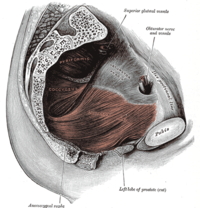
Photo from wikipedia
The endoplasmic reticulum (ER) is the place where proteins and lipids are biosynthesized and where transmembrane proteins are folded. Both pathological and physiological situations may disturb the function of the… Click to show full abstract
The endoplasmic reticulum (ER) is the place where proteins and lipids are biosynthesized and where transmembrane proteins are folded. Both pathological and physiological situations may disturb the function of the ER, resulting in ER stress. Under stress conditions, the cells initiate a defensive procedure known as the unfolded protein response (UPR). Cases of severe stress lead to autophagy and/or the induction of cell apoptosis. Many studies implicate ER stress as a major factor contributing to many diseases. Therefore, the modulation of ER stress pathways has become an attractive therapeutic target. Quercetin is a plant‐derived metabolite belonging to the flavonoids class which presents a range of beneficial effects including anti‐inflammatory, cardioprotective, anti‐oxidant, anti‐obesity, anti‐carcinogenic, anti‐atherosclerotic, anti‐diabetic, anti‐hypercholesterolemic, and anti‐apoptotic activities. Quercetin also has anti‐cancer activity, and can be used as an adjuvant to decrease resistance to cancer chemotherapy. Furthermore, the effect of quercetin can be increased with the help of nanotechnology. This review discusses the role of quercetin in the modulation of ER stress (and related diseases) and provides novel evidence for the beneficial use of quercetin in therapy.
Journal Title: Phytotherapy Research
Year Published: 2021
Link to full text (if available)
Share on Social Media: Sign Up to like & get
recommendations!